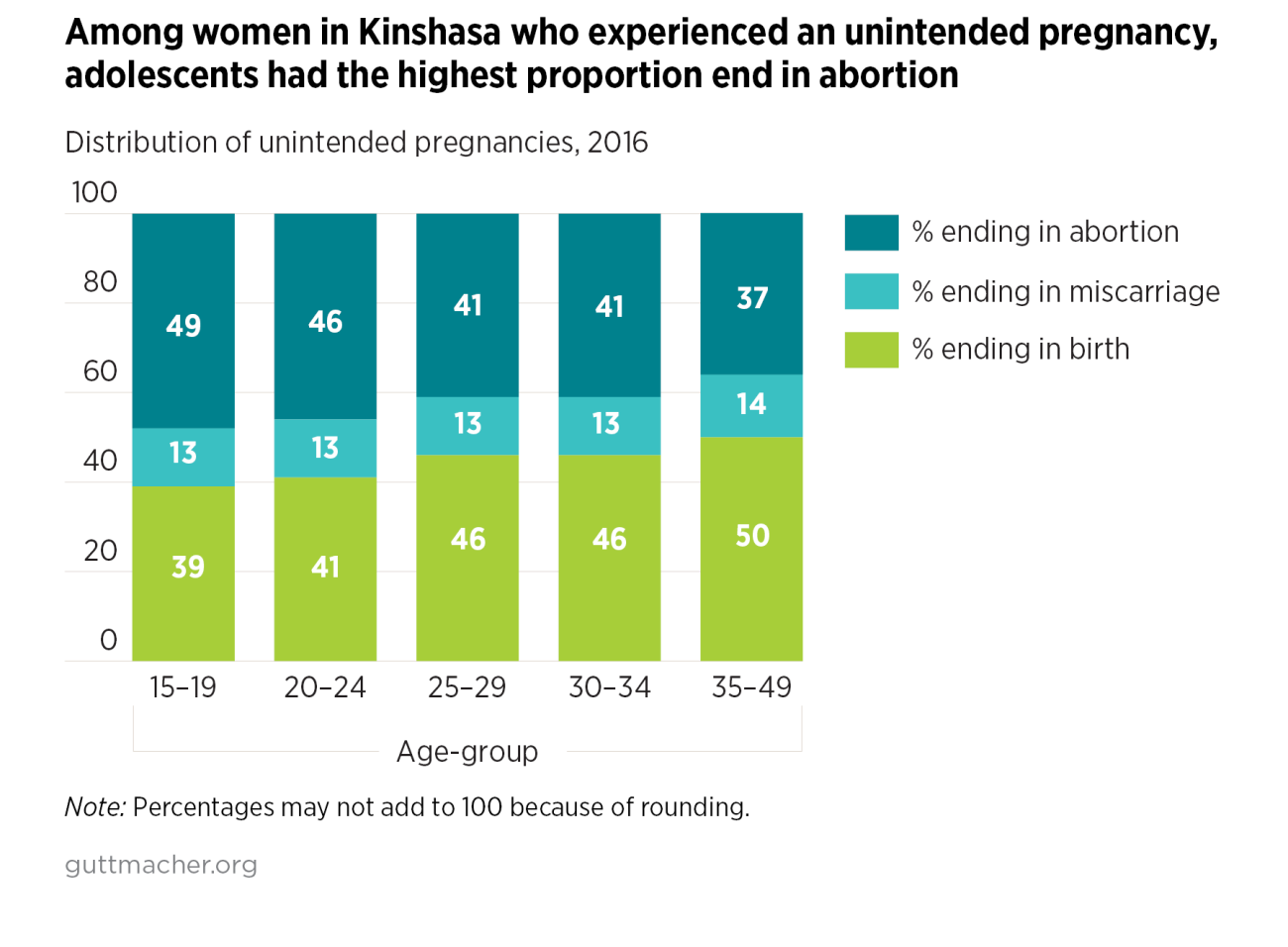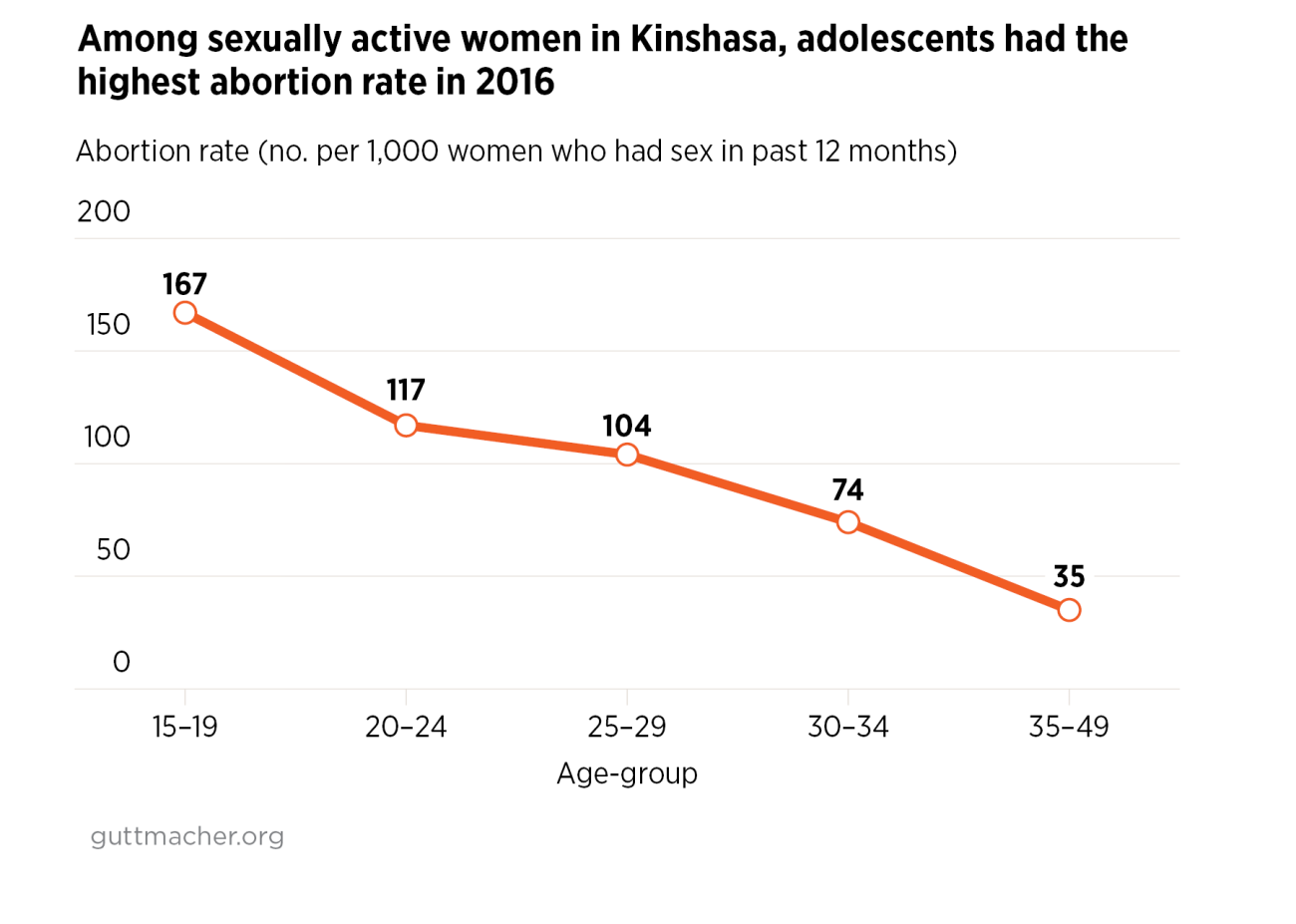Abortion in the Democratic Republic of Congo (DRC) was prohibited until 2018, when the country adopted the Maputo Protocol. This regional human rights treaty directs national governments to legalize abortion when doing so would save a woman’s life or protect her physical or mental health, as well as in cases of rape, incest and fetal anomaly. Yet, abortion procedures in the DRC remain largely clandestine, and many of them are unsafe. This fact sheet summarizes 2016 data on unintended pregnancy, abortion and postabortion care experiences among adolescent women aged 15–19 in Kinshasa, the DRC’s capital city and largest urban area. The findings and recommendations can be used to inform relevant interventions to improve adolescent sexual and reproductive health and well-being.
Unintended pregnancy and abortion
- Adolescent women in Kinshasa had an estimated 70,700 pregnancies in 2016, about 13% of the city’s total pregnancies.
- An estimated 80% of pregnancies among adolescents were unintended compared with 53–67% for older age-groups. The high proportion of unintended pregnancies among adolescents may be explained by their relatively high levels of unmet need for modern contraception—meaning that many sexually active adolescents want to avoid a pregnancy but are not using a modern method.
- Among adolescents, a larger share of unintended pregnancies ended in abortion (49%) than in birth (39%). The proportion ending in abortion was higher among this age-group than any other.
- An estimated 27,600 abortions occurred among adolescents in 2016; they accounted for 19% of all abortions in Kinshasa.
- Adolescents overall had the lowest abortion rate (55 per 1,000 women) among women younger than 35. However, sexually active adolescents had the highest abortion rate (167 per 1,000 women) among sexually active women in all age-groups.


